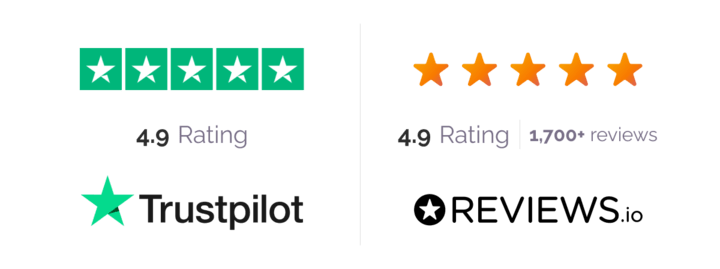As a podcaster, I’m always curious about what our listenership finds interesting. Determining interest can be a bit hit and miss. Sure, we get feedback on Twitter and we can certainly look at our reviews, comments, and number of downloads but those indicators, while important, don’t tell us the full picture of what listeners find interesting.
That’s why we decided to do a Podcast Market Fit survey to get a better understanding of how to continue to grow our listenership and find ways to improve and so can you
Product Market Fit Meet Podcast Market Fit
Product Market Fit is a startup term used to gauge the scalability of a product or its traction. The theory goes, that if you have hit Product Market Fit, then you can switch your focus from development to marketing. Now, this is not the only indicator of scalability since there are two other factors that also contribute.
Those are Minimum Viable Product (MVP) and product or company narrative. When the three of those intersect, you’re in the Goldilocks zone and achieving scale (growth) will be a lot easier. I know this seems like a lot to absorb so for our discussion of Podcast Market Fit, let’s assume a few things.

First, that your MVP (e.g. your podcast) exists and has some sort of a following (more on that a little later). Second, your narrative or message to potential listeners is clearly defined and effective. This means that potential listeners can find your podcast if they search for your topic.
Developing a Podcast Market Fit Survey
The methodology we’re going to use for the Podcast Market Fit Survey is based on this excellent post on how Superhuman (an email program) build a Product Market Fit engine. This is the basis on which we will add other questions that are specific to your podcast to glean additional insights.
Step 1: Determine if you have a Minimal Viable Audience
A Minimal Viable Audience (MVA) is the point where you have enough listeners that you are getting feedback (reviews, tweets, etc), organic growth through social or word of mouth, and some insights into what topics listeners like/dislike. It’s important to have an MVA in order for the data from a survey to be actionable and reflect your listenership. I know that sounds a bit cart before the horse but don’t fret. Your MVA does not have to be that big for this method to work.
As a rule of thumb, I’d say that to get meaningful data from a Podcast Market Fit Survey, your podcast statistics should be:
- At least 12 episodes spanning 3 months (one a week). The more episodes the better.
- More than 1,200 downloads (across all episodes). Assumes 100 listeners.
- Two to Three reviews with words on a feed like Apple Podcasts or Stitcher. The more the better.
- Social media mentions of your podcast (either by you or others) with some sharing and likes. This can be on your personal account.
- BONUS: You have an email list of at least 500 emails for your blog or pod.
I based these minimums on the probability of getting at least 14 responses from the Podcast Market Fit Survey (100 listener population), which is the minimum sample size to get actionable feedback. What we do need is enough responses to see some sort of trend to take initial action on.If you don’t get 14 responses, don’t worry. The feedback will still be valuable.
Step 2: Develop Your Survey
There are several online tools for creating surveys. Some, like SurveyMonkey and Typeform, have free plans. For the Story Grid Roundtable Podcast survey, we used SurveyMonkey.
SurveyMonkey has the advantage of pre-written questions and an easy to use interface. Some of the pre-written questions also allow you to benchmark against other survey creators. This is a nice feature to be able to see how you rank among others.
The first four questions for the podcast market fit survey that I recommend you use are directly from the Superhuman post above. They are:
1. How would you feel if you could no longer listen to <Podcast>?
A) Very disappointed
B) Somewhat disappointed
C) Not disappointed
2. What type of people do you think would most benefit from <Podcast>?
3. What is the main benefit you receive from <Podcast>?
4. How can we improve <Podcast> for you?
These four questions are at the core of determining Podcast Market Fit since we are trying to categorize what to focus on to improve or keep doing. We’ll go over that more in the analysis section.
Additional questions to ask will depend a lot on understanding your show’s audience and the reason you started your podcast to begin with. That’s where looking at reviews, comments, or tweets come in handy. Download statistics are also a good metric to understand which episode of your podcast got the most downloads or interest. Do be careful because as time goes on, you’ll get more downloads for current episodes and that might skew what is popular.
One question that I always like to include is one related to Net Promoter Score (NPS). SurveyMonkey has a benchmark question on this and it’s a good one to see if your respondents will promote you.
Other questions to consider will relate to the topic of your podcast. Some general ones to consider include:
- Years of experience in a profession
- Other podcasts respondents listen to
- Favorite episode
- Additional comments
- Contact info (like email)
In general, I’d keep the number of questions below ten and the time to take the survey to under five minutes. If you use SurveyMonkey or Typeform, you only get ten questions with the free version anyway.
Step 3: Promote Your Survey to Listeners
A solid promotion plan for your survey will make all the difference when it comes to response rates. Promote your survey to any and all the channels you have multiple times with multiple messages. Don’t feel that you are being annoying or anything like that. Be authentic in your pitch that you want to improve and need help. Say things like “help us get better” or “We’d love to hear from you.”
Ask your audience directly in your podcast and put the survey link in the show notes. Keep the survey open for at least a month or so. Give-a-ways are also a good way to get a higher response rate especially if it’s something that’s useful for your audience. Some of the best give-a-ways are Amazon gift cards or eBooks or a free hour of consulting if that’s what you do.
Step 4: Analysis of Results
Once you have collected your results, it’s time to dig into the data. The best way I have found to look at long form answers is to use a word cloud. The word cloud feature in SurveyMonkey is part of their premium package and frankly, it’s not that good. The one I prefer to use is WordClouds. It gives better control of segmenting and you can change the colors. The word cloud below was generated with it.

We will segment the data based on question #1 according to the following criteria:
Very Disappointed Segment
This segment is your super fans or your target audience. The answers they have to questions three and four will give you what you need to double down on and start doing more. Their answer to question two, What type of people do you think would most benefit from ?, will actually reflect who they are. This is the target audience for your podcast.
Looking at the words your target audience uses to describe themselves will give you hints as to topics and/or keywords on the content you’ll want to include in future podcasts. Eventually, you’ll want to develop a persona for your ideal super listener since you’ll want to give them the content that will compel them to share your podcast with like minded people.
Somewhat Disappointed Segment
This segment is your on the fence listeners. You’ll want to pay particular attention to what they say about what you can improve. This will be how you can get them over to the super listeners camp and what other potential audiences you might want to target.
Pay attention to what this group also says about the main benefit they get from your podcast. It’s reasonable to combine the Somewhat Disappointed main benefits answer with the Very Disappointed segment to narrow down (hopefully) what to double down on.
Not Disappointed Segment
You can largely ignore this segment since this is not your current or potential super listener audience. The usefulness of this segment comes about when you resurvey after you have made changes. The goal would be to see this segment size reduce as you make your changes.
If you are curious as to what this segment says, feel free to look but don’t take too much stock in the data. These listeners are the ones that won’t give you much in terms of insight into improvement because they are not aligned to your super listener who will tell all their friends about your awesome podcast.
Step 5: Makes Changes
Once you have completed your analysis, it is time to pick two to three new things to focus on. These two to three things should be the most frequent improvement requests from the Very and Somewhat segments. Implement these new ideas starting with your next podcast. Tell your listeners what you’re doing so that they see that their feedback is being taken on board. That’s one of the best ways to build loyal listeners.
The changes your listeners want might surprise you or you might have already had a hunch that you needed to do shorter episodes, better show notes or more guests. Whatever the changes are, they have at least some basis in what actual listeners want and that will allow for more engagement.
Step 6: Survey Again
Once you have made your changes, it’s best to survey your listeners again after another 12 episodes. That way, you give listeners enough time to absorb the changes and potentially get new listeners onboard as well. Make sure to encourage your listeners to share the podcast and give you a rating and a review, especially as you implement the changes.
Asking for a favor after you have taken action on your listeners feedback should compel them to help you out even more.
Criteria to Achieve Podcast Market Fit
A valid question to ask yourself would be when does my podcast achieve podcast market fit? The answer to that depends on a lot of factors, the least of which is what do you want to achieve.
For some, it might be hitting a certain number of downloads a month. For others, it might be getting a sponsor. The only quantitative number I found is based on Superhuman’s post on Product Market Fit where he quotes a post by Sean Ellis.
Sean Ellis surveyed nearly a hundred startups with the four questions above. He found that a startup achieved Product Market Fit when the number of Very Disappointed respondents was above 40%. This seems like a good number to start with for Podcast Market Fit until more data can be collected and we get better podcasting metrics like whether someone who downloaded an episode actually listened to it.
Whatever criteria you use, the trends over time will tell a bigger story than an absolute number. The process of Survey -> Analysis -> Makes Changes -> Repeat will give you a repeatable method to determine if you are giving your listeners what they are looking for.
An Example: Story Grid Editor Roundtable
We did a Podcast Market Fit survey for our Story Grid Editor Roundtable Podcast to determine how good a job we were doing and to get ideas for our next season (Season 6).
What we found was mostly what we expected but we did find some nuggets of wisdom that we’re going to take action on. One of those nuggets was shorter episodes that dealt with single topics. We had experimented with Bite Size Episodes before and did see that they were popular but it’s hard to tease out popularity by downloads since as listeners find you, downloads tend to go up. For a full write-up of our results, check out the Story Grid Editor Roundtable Podcast Listenership Survey Results.
Optimum Audience Engagement Happens Systematically
Audience engagement has a lot to do with understanding your audience and super serving their needs. Doing a Podcast Market Fit survey is one way to figure out where to start but it’s not the only way.
Being tuned into your audience by interacting with them on social media, providing stellar content, and being consistent with releasing content will go a long way to building audience engagement. This systematic approach, augmented with asking your listeners how you are doing, is the best way to build an audience of super listeners.
About the Author

Jarie Bolander has over 20 years of experience bringing innovative technology products to market. He is a Certified Story Grid Editor who uses his editor training to help mentor entrepreneurs on how to tell better stories. He has published six books with his latest being a Big Idea Nonfiction book called The Entrepreneur Ethos which shows how to build a more ethical, inclusive, and resilient entrepreneur community. He is also a podcaster on the Story Grid Editor Roundtable podcast, which digs deep into story structure and how to tell better stories.



